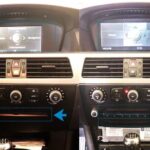The automotive industry is undergoing a massive transformation, driven by the increasing importance of software. No longer are consumers solely focused on horsepower and sleek designs; they crave personalization, connectivity, and the immediacy offered by software-driven experiences. This shift marks the rise of the Dream Car Program, a customer-centric approach to vehicle development that prioritizes software innovation.
Today’s cars are essentially computers on wheels, with millions of lines of code powering everything from engine performance to infotainment systems. This software revolution, much like the smartphone revolution, presents both challenges and opportunities for automakers. Companies like Tesla, with its over-the-air updates and autonomous driving features, demonstrate the potential of a dream car program to disrupt the market and cultivate brand loyalty.
Four Pillars of the Dream Car Program
To thrive in this new era, automakers must embrace a comprehensive dream car program that encompasses four key dimensions:
1. Reimagine the Vehicle: Software at the Core
The modern dream car is more than just transportation; it’s an extension of the user’s digital life. This requires:
- Frequent OTA Updates: Delivering new features and functionalities seamlessly.
- Seamless Digital Integration: Connecting with users’ smartphones, smart homes, and other devices.
- Autonomous Driving Capabilities: Investing in advanced driver-assistance systems and self-driving technology.
- Data-Driven Insights: Utilizing real-time data to personalize the user experience.
Beyond the “must-haves,” a successful dream car program needs “wow” factors – unique features that differentiate the vehicle and foster brand loyalty. Think smart surfaces, holographic displays, and hyper-personalized experiences.
2. Rethink Value Creation: Software-Driven Profitability
Software unlocks new revenue streams and cost optimization opportunities. A successful dream car program can lead to:
- Premium Pricing: Consumers are willing to pay for innovative software features.
- Reduced Hardware Costs: Standardized hardware platforms enabled by software differentiation.
- Increased Efficiency: Data-driven insights improve R&D, production, and customer service.
This shift could result in significant margin improvements, up to $7,500 per vehicle in the premium segment.
3. Redefine Technology Strategy: Controlling the Software Ecosystem
Automakers must strategically navigate the evolving technology landscape, focusing on:
- User Experience Control: Integrating hardware and software to deliver a cohesive experience.
- Operating System Mastery: Deepening OS skills to control key functionalities.
- Data Ownership: Securing access to valuable vehicle and user data.
These control points are crucial for differentiation and future innovation within the dream car program.
4. Revamp the Operating Model: Agile and Data-Driven
A dream car program demands a new way of working, characterized by:
- Real-time Data Utilization: Leveraging sensor data for continuous improvement.
- Customer-Centricity: Building lasting relationships through personalized experiences and exceptional service.
- Agile Development: Embracing rapid iteration and continuous delivery of software updates.
The Future of the Dream Car Program
The transformation to a software-defined future is not a mere trend; it’s a fundamental shift reshaping the automotive industry. Automakers who embrace a comprehensive dream car program will be best positioned to capture market share, drive profitability, and define the future of mobility. This requires bold leadership, strategic partnerships, and a relentless focus on delivering exceptional user experiences. The future of the automobile is here, and it’s powered by software.

